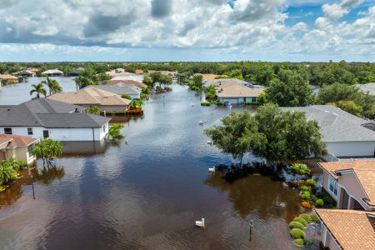How Digital Payments Infrastructure Increases Hurricane Preparedness
By Alison Williams, Director of Alliances, InvoiceCloud, with contributions from Nemanja Kuzmanovic, City of Clearwater, Florida

The 2024 hurricane season was one of the most severe on record, creating unprecedented destruction to the tune of $182.7 billion worth of damage. Scientists predict that this year’s storm season, which officially began June 1, will likely be highly active and volatile as well. As hurricanes become more difficult to accurately predict and prepare for, the damage caused by burst pipes, flooding, downed trees and debris, and disrupted utilities is also increasing. And as utility companies scramble to repair the expensive damage caused by storms, customers often face increased bills to help cover the cost.
Last year, Florida Power & Light projected monthly bills would increase by $12 to cover restoration costs that mounted during the 2024 hurricane season. For those grappling with the aftermath of a storm, even small costs quickly compound, and every resource conserved and dollar saved can make a difference. That’s why the latest measure of hurricane preparedness is happening online, as communities like the city of Clearwater in Florida embrace digital utility billing and measures like AutoPay, which can help mitigate the impact of these weather-related price surges for customers and municipalities.
Why Extreme Weather Increases Utility Bills
Hurricanes wreak havoc on utility infrastructure: High winds down power lines and flooding due to heavy rain and storm surges swamp sewer lines. Interruptions to these systems can create unpredictable secondary damage as stoplights become unreliable and pipes back up in homes and businesses. While the extreme weather dies down after a day or two, fixing the destruction left in its wake can take months of work and millions of dollars — which is why clean-up efforts from last year’s storm season are still ongoing, and power bills have increased.
Even milder storms can result in higher utility bills. Damage that seems less dramatic from the outside, such as pipes that are cracked by a lower-caliber storm rather than burst by a category five hurricane, can still be costly to fix — and those costs can show up on customer bills. What’s more, when people hunker down to wait out the weather, they use more resources inside their own homes, driving up their utility bills. The high heat that can worsen storm season also leads people to run their air conditioners more and use more water.
Conserving Costs With Digital Payments
As storms grow stronger and their impacts become more costly, one of the smartest ways cities can brace for hurricane season is through the adoption of digital payment solutions. Paperless billing and online payments may not be the first tools that come to mind when thinking about hurricane preparedness, but in high-risk areas like Clearwater, they’re proving to be essential.
Storms often interrupt traditional communication and delivery systems. Hurricanes routinely delay or halt mail service, causing paper bills and mailed checks to go missing or arrive late, leading to unnecessary late fees and even temporary lapses in utility service. For residents already under stress, this adds insult to injury. On the utility side, staff are pulled away from critical recovery efforts to handle payment issues and follow-up calls.
That’s where digital billing comes in, and tools like AutoPay, paperless statements, and text-to-pay options can help communities cut down on these disruptions to revenue in times of crisis. One of those communities is Clearwater, where Nemanja Kuzmanovic manages the city’s digital payment platform. In his experience, “Adopting digital payments platform InvoiceCloud allowed nearly half of our utility customers to switch to paperless billing, leading to an annual savings of $42,000 in print and mailing costs and reclaiming more than 40 staff hours per week previously spent on payment processing. That’s time and money redirected toward storm recovery and helps us get ready for the future.”
“This kind of operational efficiency doesn’t just lighten the administrative load, it directly helps our community bounce back faster,” continues Kuzmanovic. “And with online payment options that work from anywhere, it allows us to meet the customers where they are throughout the recovery effort.”
Digital preparedness is financial preparedness in disaster recovery. As cities across Florida continue rebuilding after hurricanes Helene and Milton, digital payments are helping residents and municipalities weather the storm, literally and financially. More importantly, innovations in digital payment platforms are changing customer behavior in ways that strengthen resilience — driving paperless enrollments, reducing reliance on vulnerable mail systems, and freeing up city resources for faster recovery. At the same time, these tools satisfy residents’ growing expectations for modern, self-service options. For forward-thinking communities, leveraging digital innovation is no longer just about efficiency; it’s about protecting the city and ensuring continuity in the face of ever-stronger storms.
